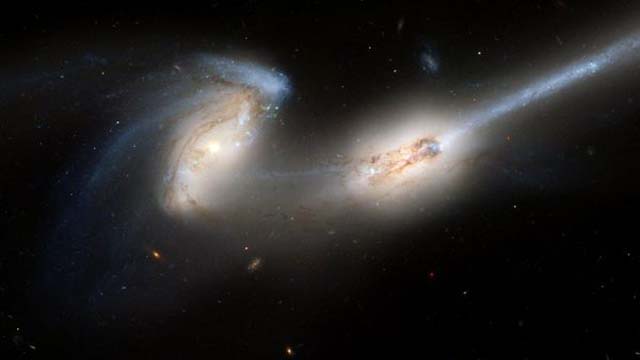
The US National Science Foundation recently announced international funding to South Africa with a $9.5 million investment to expand on capabilities of HERA, the Hydrogen Epoch of Reionisation Array telescope. “This innovative telescope will allow astronomers to understand the formation and evolution of the very first stars and galaxies in the Universe” says senior astronomer and Rhodes University research associate Dr Gianni Bernardi.
HERA, which was recently granted the status of a Square Kilometre Array (SKA) precursor telescope, currently has 19, 14?metre radio dishes at the SKA South African site. The $9.5 million in new funding will allow the array to expand to 220 dishes by 2018.
Dr Bernardi believes that HERA has the potential to transform our knowledge in one of the main SKA science areas.
Four hundred thousand years after the Big Bang, the Universe was largely made up of a cloud of neutral hydrogen, the simplest and most common element. In time, these clouds became dense and hot enough that the hydrogen atoms fused and the first stars formed. These first objects flooded the Universe with ultraviolet light that ionised all the hydrogen atoms between galaxies into protons and electrons – the beginning of cosmic reionisation. HERA will explore cosmic reionization, shedding light into the formation and evolutions of the first stars and galaxies.
Rhodes University’s Centre for Radio Astronomy Technologies and Techniques (RATT) will play a key role in this cutting edge science and technology project. “The RATT was established to develop calibration and imaging techniques to support pioneering cutting edge science research”, says Prof. Oleg Smirnov, the RATT SKA SA research chair.
The telescope construction is all the more impressive because the telescope’s minimalist design makes it a relatively inexpensive structure. Construction materials are sourced and fabricated from within South Africa and local contractors are involved in all the aspects of the build.
The University of California, Berkeley, leads the experiment in collaboration with partner teams from the USA, UK, Italy and South Africa. Participating South African institutions include Rhodes University, UKZN, UWC, WITS and SKA South Africa.
Photograph courtesy of Garth Illingworth, UCSC/LO
